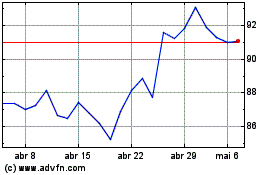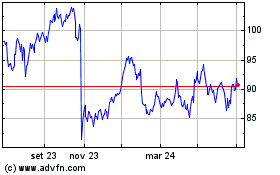Sarclisa is the first anti-CD38 treatment
approved in China for patients with newly diagnosed multiple
myeloma ineligible for transplant
- Approval based on positive results
from the IMROZ phase 3 study that demonstrated Sarclisa in
combination with bortezomib, lenalidomide, and dexamethasone (VRd)
significantly improved progression-free survival, compared to VRd
alone in transplant-ineligible newly diagnosed multiple
myeloma
- Second approval in China in three
weeks following the R/R MM indication announced on January 13,
2025
Paris, January 31, 2025. The
National Medical Products Administration (NMPA) in China has
approved Sarclisa, in combination with a standard-of-care regimen,
bortezomib, lenalidomide, and dexamethasone (VRd), for the
treatment of adult patients with newly diagnosed multiple myeloma
(NDMM) ineligible for autologous stem cell transplant (ASCT) based
on data from the IMROZ phase 3 study.
Olivier NatafGlobal Head,
Oncology“When Sanofi entered China more than four decades ago, we
did so with the intention of bringing potentially transformative
therapies to Chinese patients. This approval, occurring just weeks
after Sarclisa’s first in the country, represents tremendous
progress towards advancing this mission. Now, patients with
multiple myeloma and their providers have access to two new
Sarclisa-based regimens that have the potential to improve outcomes
across lines of therapy.”
This approval closely follows the decision from
the NMPA earlier in January 2025, approving Sarclisa in combination
with pomalidomide and dexamethasone (Pd) for the treatment of adult
patients with relapsed or refractory MM (R/R MM) who have received
at least one prior line of therapy, including lenalidomide and a
proteasome inhibitor. Beyond China, in the Asia-Pacific region, a
regulatory submission for Sarclisa in NDMM patients not eligible
for hematopoietic stem cell transplantation (HSCT) is currently
under review in Japan.
About SarclisaSarclisa (isatuximab) is a CD38
monoclonal antibody that binds to a specific epitope on the CD38
receptor on MM cells, inducing distinct antitumor activity. It is
designed to work through multiple mechanisms of action including
programmed tumor cell death (apoptosis) and immunomodulatory
activity. CD38 is highly and uniformly expressed on the surface of
MM cells, making it a target for antibody-based therapeutics such
as Sarclisa. In the US, the non-proprietary name for Sarclisa is
isatuximab-irfc, with irfc as the suffix designated in accordance
with nonproprietary naming of biological products guidance for
industry issued by the US Food and Drug Administration.
Currently, Sarclisa is approved in more than 50
countries, including in the US, EU, Japan, and China, across
multiple indications. Based on the ICARIA-MM phase 3 study,
Sarclisa is approved in the US, EU and Japan in combination with Pd
for the treatment of patients with R/R MM who have received ≥two
prior therapies, including lenalidomide and a proteasome inhibitor;
this combination is also approved in China for patients who have
received at least one prior line of therapy, including lenalidomide
and a proteasome inhibitor. Based on the IKEMA phase 3 study,
Sarclisa is also approved in more than 50 countries in combination
with carfilzomib and dexamethasone, including in the US for the
treatment of patients with R/R MM who have received one to three
prior lines of therapy and in the EU for patients with MM who have
received at least one prior therapy. In the US, EU, and China,
Sarclisa is approved in combination with VRd as a front-line
treatment option in transplant-ineligible NDMM patients, based on
the IMROZ phase 3 study.
Sanofi continues to advance Sarclisa as part of
a patient-centric clinical development program, which includes
several phase 2 and phase 3 studies across the MM treatment
continuum spanning six potential indications. In addition, the
company is evaluating a subcutaneous (SC) administration method for
Sarclisa in clinical studies. In January 2024, Sanofi reported
positive results from the IRAKLIA phase 3 study evaluating Sarclisa
SC formulation administered via an on-body delivery system (OBDS)
in combination with Pd compared to intravenous (IV) Sarclisa in
patients with R/R MM. In December 2024, additional positive results
from the program, including the GMMG-HD7 phase 3 study evaluating
Sarclisa-RVd induction therapy in transplant-eligible NDMM
patients, were also presented at the 66th American Society of
Hematology Annual Meeting and Exposition. The safety and efficacy
of Sarclisa has not been evaluated by any regulatory authority
outside of its approved indications and methods of delivery.
In striving to become the number one
immunoscience company globally, Sanofi remains committed to
advancing oncology innovation. Through focused strategic decisions
the company has reshaped and prioritized its pipeline, leveraging
its expertise in immunoscience to drive progress. Efforts are
centered on difficult-to-treat often rare cancers such as select
hematologic malignancies and solid tumors with critical unmet
needs, including multiple myeloma, acute myeloid leukemia, certain
types of lymphomas, as well as gastroenteropancreatic
neuroendocrine tumors and other gastrointestinal and lung
cancers.
For more information on Sarclisa clinical
studies, please visit www.clinicaltrials.gov.
About Sanofi We are an innovative global healthcare
company, driven by one purpose: we chase the miracles of science to
improve people’s lives. Our team, across the world, is dedicated to
transforming the practice of medicine by working to turn the
impossible into the possible. We provide potentially life-changing
treatment options and life-saving vaccine protection to millions of
people globally, while putting sustainability and social
responsibility at the center of our ambitions.Sanofi is listed on
EURONEXT: SAN and NASDAQ: SNY
Media RelationsSandrine
Guendoul | +33 6 25 09 14 25
| sandrine.guendoul@sanofi.com Evan Berland |
+1 215 432 0234 | evan.berland@sanofi.com Nicolas
Obrist | +33 6 77 21 27 55 |
nicolas.obrist@sanofi.com Léo Le Bourhis | +33 6
75 06 43 81 | leo.lebourhis@sanofi.com Victor
Rouault | +33 6 70 93 71 40
| victor.rouault@sanofi.comTimothy
Gilbert | +1 516 521 2929 |
timothy.gilbert@sanofi.com
Investor RelationsThomas Kudsk
Larsen |+44 7545 513 693 | thomas.larsen@sanofi.com
Alizé Kaisserian | +33 6 47 04 12 11 |
alize.kaisserian@sanofi.comFelix
Lauscher | +1 908 612 7239 |
felix.lauscher@sanofi.com Keita
Browne | +1 781 249 1766 |
keita.browne@sanofi.comNathalie
Pham | +33 7 85 93 30 17 |
nathalie.pham@sanofi.comTarik Elgoutni | +1 617
710 3587 | tarik.elgoutni@sanofi.comThibaud
Châtelet | +33 6 80 80 89 90 |
thibaud.chatelet@sanofi.com
Sanofi forward-looking
statementsThis press release contains forward-looking
statements as defined in the Private Securities Litigation Reform
Act of 1995, as amended. Forward-looking statements are statements
that are not historical facts. These statements include projections
and estimates regarding the marketing and other potential of the
product, or regarding potential future revenues from the product.
Forward-looking statements are generally identified by the words
“expects”, “anticipates”, “believes”, “intends”, “estimates”,
“plans” and similar expressions. Although Sanofi’s management
believes that the expectations reflected in such forward-looking
statements are reasonable, investors are cautioned that
forward-looking information and statements are subject to various
risks and uncertainties, many of which are difficult to predict and
generally beyond the control of Sanofi, that could cause actual
results and developments to differ materially from those expressed
in, or implied or projected by, the forward-looking information and
statements. These risks and uncertainties include among other
things, unexpected regulatory actions or delays, or government
regulation generally, that could affect the availability or
commercial potential of the product, the fact that product may not
be commercially successful, the uncertainties inherent in research
and development, including future clinical data and analysis of
existing clinical data relating to the product, including post
marketing, unexpected safety, quality or manufacturing issues,
competition in general, risks associated with intellectual property
and any related future litigation and the ultimate outcome of such
litigation, and volatile economic and market conditions, and the
impact that pandemics or other global crises may have on us, our
customers, suppliers, vendors, and other business partners, and the
financial condition of any one of them, as well as on our employees
and on the global economy as a whole. The risks and uncertainties
also include the uncertainties discussed or identified in the
public filings with the SEC and the AMF made by Sanofi, including
those listed under “Risk Factors” and “Cautionary Statement
Regarding Forward-Looking Statements” in Sanofi’s annual report on
Form 20-F for the year ended December 31, 2023. Other than as
required by applicable law, Sanofi does not undertake any
obligation to update or revise any forward-looking information or
statements.
All trademarks mentioned in this press release
are the property of the Sanofi group.
Sanofi (EU:SAN)
Gráfico Histórico do Ativo
De Jan 2025 até Fev 2025

Sanofi (EU:SAN)
Gráfico Histórico do Ativo
De Fev 2024 até Fev 2025
